
Despite its rich history some online stores still don’t use remarketing. There is a reasonable explanation for that – they just don’t know how it works. Hence they don’t know why they need it. Let’s hit that topic and answer the essential questions while showing you why exactly proper remarketing tools are vital for one of the most important KPIs in eCommerce – LTV.
What Is Remarketing?
Remarketing is a marketing strategy to work with the part of your audience that already interacted with your brand. People, who have visited your website at least once, browsed through your product catalog or searched for something, even started an order but for some reason dropped out in the middle.
A good example is a display ad reaching out to the customer on some other website he often visits. It catches the eyes and actively sells the customer what he wanted yet failed to buy.
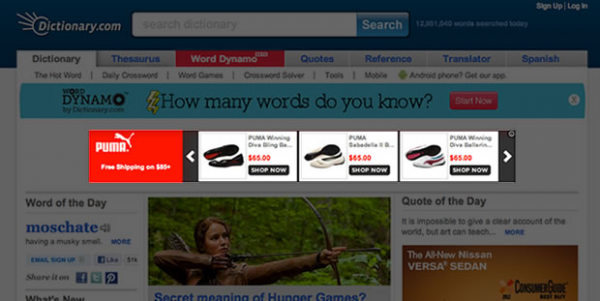
Everybody saw them. On numerous sites, in social networks. Display ads are majorly responsible for that “Big Brother Is Watching You” feeling.
Retargeting or Remarketing? Is There a Difference?
Nope. These two words describe the same concept, except that “Remarketing” was launched by Google.
Retargeting means you find your target again. Remarketing means a second marketing attempt at the same person. The action is the same – a targeted campaign to hit a particular segment (people, who have interacted with the brand). Once the source and the target are established, you apply a standard marketing toolset.
Is Remarketing Display Ads Only?
In short, no. Remarketing is so much more. It is a broad concept involving a wide set of different channels to work with a particular segment.
The toolset is very wide too:
- Display ads in affiliate networks and social networks
- Automated trigger emails
- Automated trigger web push notifications
- Automated mobile push notifications
- SMS
- Various mobile and desktop messengers
- etc.
The only rule is that the tool must be designed to reach the target audience.
Display Ads vs. Remarketing
Is there a difference between regular display ads and remarketing through display ads? Yes, there is. Regular display ads are used to attract a new visitor. The keyword is “new.” “Buy me! I look so good. I’m the best laptop on the market. I know you’ve read a lot of reviews and you know it!” – this kind of message.
Remarketing display ads are meant to remind about the brand, show the path to return to the store and finally make the purchase. “Remember me? I’m the laptop you looked at for so long in that store. Don’t you think it’s time you bought me? Right now, only for you, I go with a 15% discount!” – that’s remarketing.
Both can be very precise in targeting. For one, if you were looking through laptops for gaming, you could get this ad:
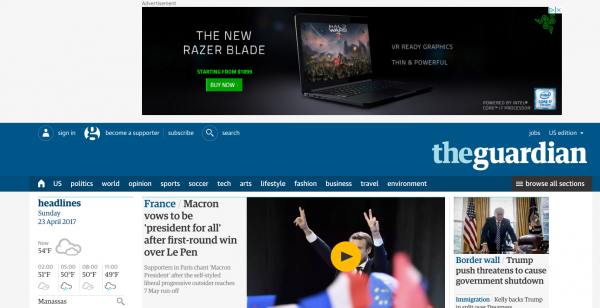
This is a regular display ad, not remarketing
And the next example is a Facebook remarketing ad. It shows after you’ve taken an interest in a particular product at a certain online store:
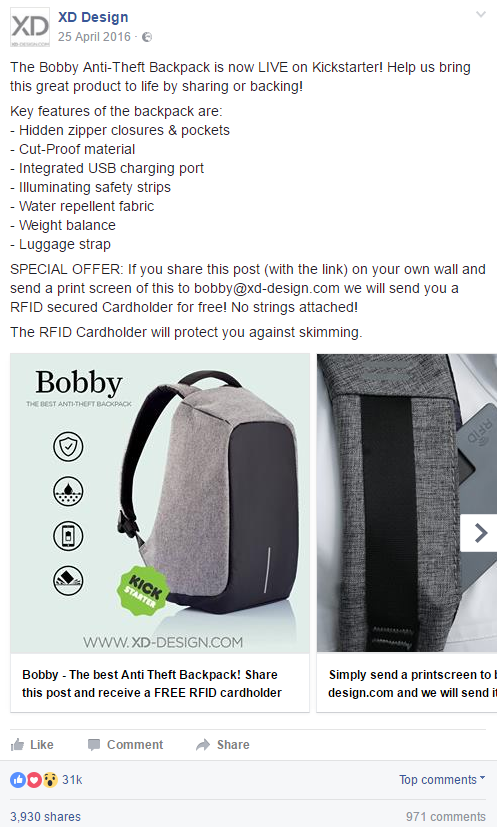
They both look the same, but they both are designed to reach different goals.
How Does an Ad Find the Target?
Any customer can be traced by the on-site behavior: browsing events, cart events, purchase events and so on. No personal data used, no worries. All that is possible because of the cookies any modern website has. Accepting your cookie policy, the visitor agrees his on-site behavior is stored for future analysis. Remarketing relies on the cookies to determine what the visitor took an interest in and what ads to show on the sites most visited by this person.
How Does an Ad Know Where to Show?
Website owners do not per se sell any ad slots, directly to the advertiser. A site owner can offer to add to his site your banner and show it to everybody. That’s about that. Targeting? No, sorry!
This is why there are special advertising networks. Google DoubleClick for example. They have every tool needed for proper remarketing. Site owners simply join the network and add a new advertising slot getting their share for that. Everything else is done by the network, automatically: choosing the highest bidder (advertiser) for the slot, publishing your ads and making sure it’s shown only to your target audience (people, who visited your site).
Common Remarketing Problems
Remarketing has its flaws, like everything in this world. This video is a good illustration of those flaws:
Here is a list of common remarketing problems.
Single-time Purchases
More than often we need a single-time product. Something that is used for a special occasion and never in everyday life. Say, you’re buying a Halloween costume, just because you agreed to come to a friend’s Halloween party. You hardly wear a freaky costume every day and probably would use it just once in a long time (unless you’re a Halloween lover, but then you’d probably buy a new costume every new Halloween). You think the buy is over, but relentless remarketing tools will be trying to sell you Halloween costumes, masks and accessories for the next month. Not to mention newsletters and web push notifications – those will be stalking you until you manually unsubscribe.
Regular remarketing tools are not yet able to recognize single-time purchases. This kind of situation is common when you buy somebody a gift. It’s not like you’re a Barbie lover, you just bought it once, for your niece!
Finished Purchase Problem
Ads will haunt you until you click the banner and purchase the item. The system will not stop advertising until this chain of events is complete. Even if you’ve already bought the item somewhere else, offline or online.
Remarketing depends on the event tracking and does not always know when to stop. As a result, you’re wasting your budget on a smartphone ad, while you should have replaced it with a banner showing accessories for that smartphone.
Product Priority Problem
Traditional advertising networks like to sell you one slot and let you advertise a single product. Imagine a situation: you’re a customer, you added six books to the cart but got distracted and never completed the purchase. Among those six, there are three books that you’ve been searching hard to buy. Another three just taking up space because they may (or may not) be good enough and the delivery is cheaper this way. You don’t even remember their titles.
Time flies, and you get hit by a remarketing ad. It shows you a book that you put there just to take up extra space. You don’t recognize it, and the banner misses you completely – you get deliberately banner-blind. If the ad had shown you all the books, you would have made that purchase.
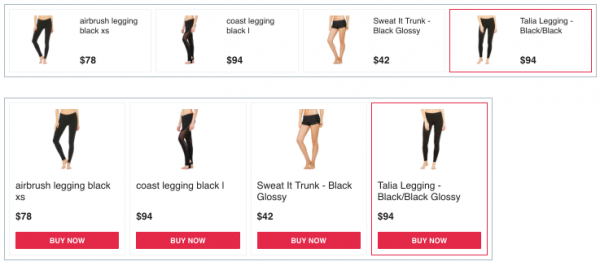
You can notice that REES46 features four ads per block
Regular display ads can show only 1 item, which means you can never be sure it’s the one most important to the buyer and will generate you a sale.
Annoyance Problem
You bought the product, but the ad keeps stalking you for weeks, you get negative about the store, even if you like the product. As we said before, ad networks are not always clever about the purchase fact and may keep showing you the same ad for a long time.
Display ads can appear very annoying, especially if you don’t need the product anymore.
Smarter marketers may advise you to set impressions number between 7 and 12, but this looks more like fortune telling than real intelligence. The ad should stop precisely when it’s not topical anymore.
Setting Up Remarketing with No Technical Skills
In the process of creating REES46 Remarketing Tools, were thought: “What’s the most annoying thing in remarketing? What puts you off using similar tools?”. We found out the pitfalls our competitors were suffering from and made sure our advertising platform knows how to avoid them.
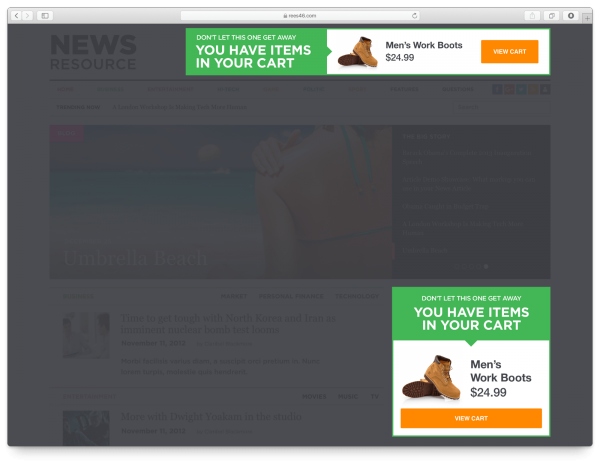
-
- CPS-based pricing model. Circa 69% of all carts are abandoned. Reasons vary: sometimes the visitor just wanted to bookmark some products adding them to the cart, sometimes it’s done to see the overall price or to understand better what to discard. That’s why paying by impression is an unprofitable pricing model, unlike the CPS-based model when you pay per sale we help you make.
- Knowing when to stop. Our system constantly gathers and analyzes new data on multiple websites included in our ever-growing REES46 network. If your customer buys the item somewhere else, our system will learn about it and stop showing the ad. You will be able to use this banner slot for a new sale: for instance, accessories for the item.
- Complete analytics, always at hand. The last thing anybody wants is juggling 20 opened tabs to make sense of the remarketing or email campaign performance while also checking the KPIs. REES46 Unified Dashboard is designed to solve this problem.
 Most importantly: REES46 features complex remarketing. Display ads on multiple websites and in social networks, email marketing, web push marketing. With a channel map that rich, your visitors won’t leave without a purchase.
Most importantly: REES46 features complex remarketing. Display ads on multiple websites and in social networks, email marketing, web push marketing. With a channel map that rich, your visitors won’t leave without a purchase.
Finally, LTV!
There is also the LTV. LTV is one of the Key Performance Indicators and stands for Life Time Value – the revenue generated by a customer during his whole life cycle in your store, minus the attraction and retention costs.
A high LTV tells you your store is doing well. Your new customers return again and again to buy more. A low LTV signals that you have a lot of lapsed customers with a single purchase.
If you spend a lot on attraction and then so easily let your customers skip away, you’re wasting a lot of your money on nothing. Re-engagement is so much easier and cheaper than acquiring new customers. This is an experience-proven opinion upheld by 44% of online businesses and the main reason for remarketing tools to be so popular. Re-engage your customers! A better remarketing will get you a higher LTV. Your revenue will like it.